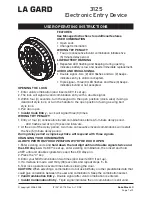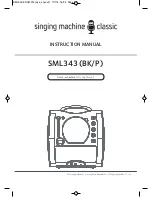
The vertical dark grey section on the left provides vital statistics on the loudspeaker and its amplifier(s), including its operating tempera-
ture. For further details on the controls and status indicators please refer. to page 17.
The graphic show is for a two-way loudspeaker with a single amplifier. If it was for a bi-amped 3-way loudspeaker, there would be 3
transducers and two amplifier bar graphs.
The transducer icons on the right each have a “traffic light” status indicators. Green is for all OK and red is for driver failure. Yellow
indicates the driver has been repeatedly driven far enough into limiting that its normal life span may be reduced
Driver conditions are dynamically supervised with program material during operation, but a manual test button is also provided to con-
firm coil status. The 0 are used when the program material either lacks specific frequencies or is too weak.
The loudspeaker’s RHAON Microcontroller and DSP Firmware version and MAC (Machine Access Control) address are shown in a
darker grey panel at the bottom right of this window.
The panel at the bottom shows alerts for Voltage Detect, Fault Relay, Ethernet and Priority Override status.
The Priority Override indicator will change from showing “Inactive” to “Active” when the override circuit is in use
(has been activated).
The Fault Relay status line will change from “Off” to “On” when an amplifier fault has been detected or the Ethernet
carrier signal is lost.
The Voltage Detect will read “High” when it senses a voltage on the Sense input line and “Unknown” when no volt
age is present.
The Ethernet Status will show “Primary” when an Ethernet Carrier signal is detected at the Primary Ethernet input
and “Off Line” if the carrier signal is lost, except in “Redundant” systems having a secondary Ethernet source. In
these systems, the amplifier will be switched over to the secondary input as soon as the primary signal is lost; the
status line will then change to Secondary”.
28
S
U
P
E
R
V
IS
E
M
O
D
E
Users Manual
















































